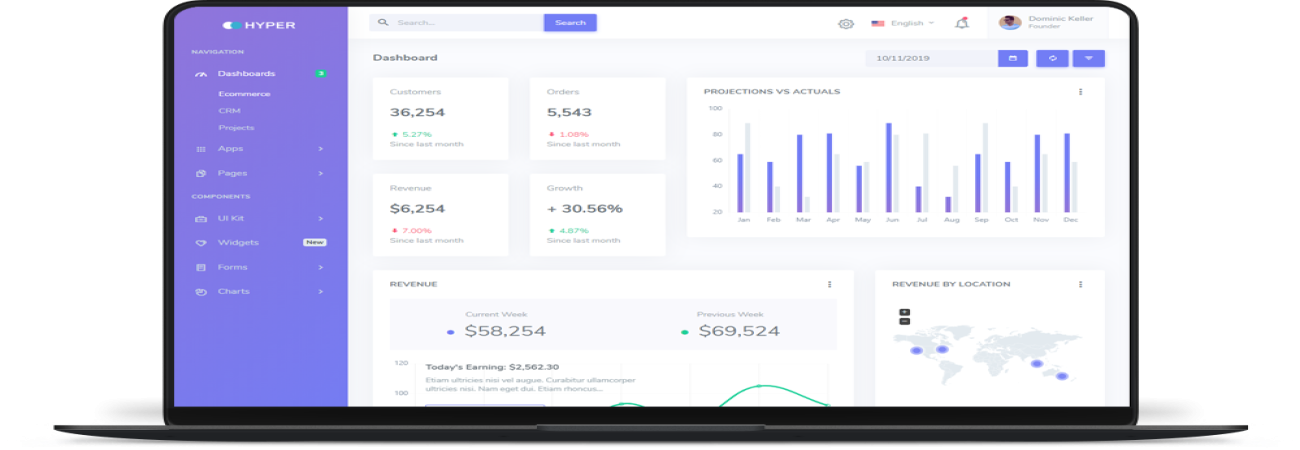- 3 Jul 2024 01:51 pm

What is Cyber Security and How It Works
Introduction
Cyber security, also known as information technology security, involves protecting computers, networks, and data from unauthorized access, attacks, damage, and theft. In an increasingly digital world, cyber security has become critical to safeguarding personal, corporate, and governmental information.
Understanding Cyber Security
Cyber security encompasses a wide range of practices, tools, and concepts designed to ensure the integrity, confidentiality, and availability of information.
- Integrity: Ensuring that information is accurate and unaltered.
- Confidentiality: Protecting information from unauthorized access.
- Availability: Ensuring that information and resources are available to authorized users when needed.
Core Components of Cyber Security
Network Security: Protecting the integrity, confidentiality, and availability of networks and data. It involves securing the infrastructure, including routers, switches, and communication channels.
Information Security: Protecting data from unauthorized access, disclosure, alteration, and destruction. This includes measures such as encryption, access controls, and data masking.
Endpoint Security: Securing end-user devices like computers, mobile devices, and tablets from threats. This involves using antivirus software, firewalls, and intrusion detection systems.
Application Security: Ensuring that software applications are designed and implemented to be secure. This includes regular updates, patches, and secure coding practices.
Cloud Security: Protecting data and applications in cloud environments. It involves ensuring secure access, encryption, and compliance with security standards.
How Cyber Security Works
Threat Identification and Assessment: The first step involves identifying potential threats and vulnerabilities. This can be done through regular risk assessments, threat modeling, and security audits.
Preventive Measures: Implementing security measures to prevent cyber attacks. This includes firewalls, encryption, antivirus software, and secure configurations.
Detection: Monitoring systems and networks for signs of cyber threats. Tools like intrusion detection systems (IDS), security information and event management (SIEM) systems, and regular security audits help in identifying breaches.
Response: Establishing protocols for responding to cyber incidents. This includes incident response plans, forensic analysis, and communication strategies.
Recovery: Restoring systems and data after an incident. This involves data backups, disaster recovery plans, and post-incident analysis to improve future security measures.
Common Cyber Security Threats
- Malware: Malicious software like viruses, worms, and ransomware that can damage systems or steal data.
- Phishing: Fraudulent attempts to obtain sensitive information by pretending to be a trustworthy entity.
- Man-in-the-Middle (MitM) Attacks: Intercepting and altering communication between two parties without their knowledge.
- Denial of Service (DoS) Attacks: Overloading a network or system to make it unavailable to users.
- SQL Injection: Exploiting vulnerabilities in a database to gain unauthorized access to data.
Best Practices for Cyber Security
- Regular Updates and Patches: Keeping software and systems up to date to protect against known vulnerabilities.
- Strong Passwords and Authentication: Using complex passwords and multi-factor authentication to secure accounts.
- Employee Training: Educating employees about cyber threats and safe practices.
- Data Encryption: Encrypting sensitive data both in transit and at rest.
- Access Controls: Limiting access to data and systems based on user roles and responsibilities.
Conclusion
Cyber security is an essential aspect of modern life, protecting individuals, organizations, and governments from cyber threats. By understanding its components and implementing best practices, we can ensure a safer digital environment.
